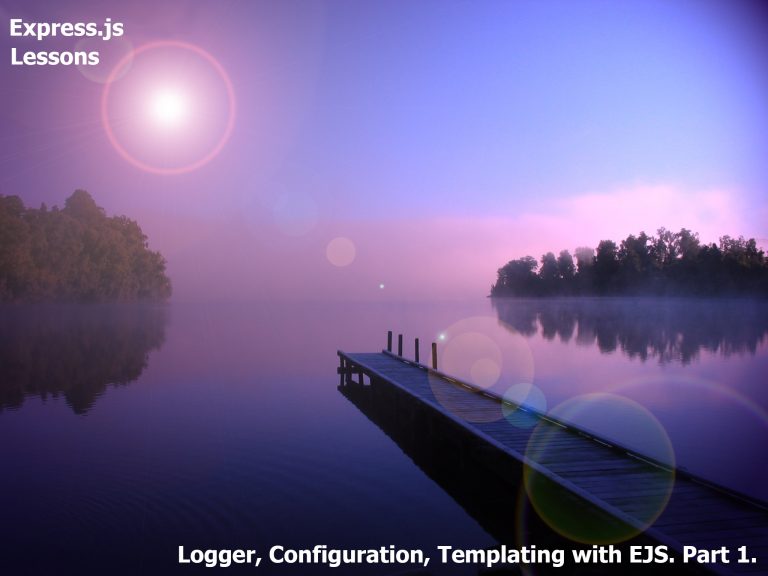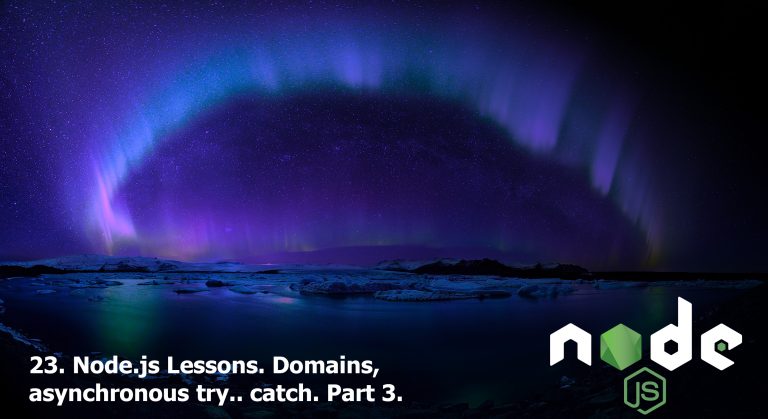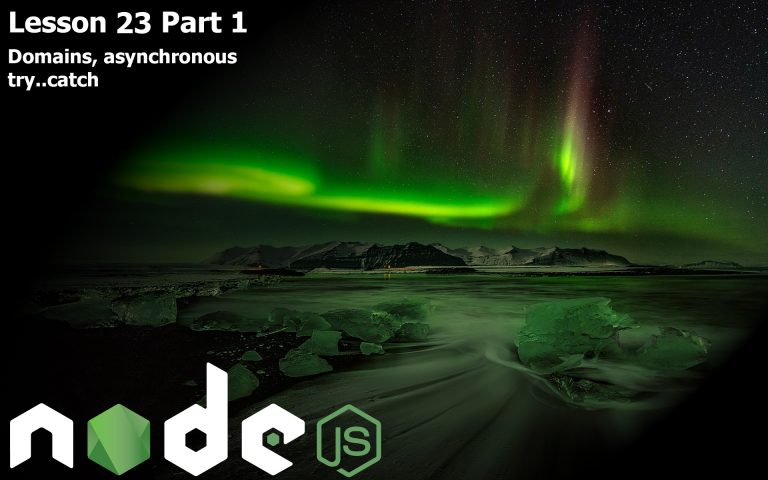2. Express.js Lessons. Logger, Configuration, Templating with EJS. Part 1.

Hey all! To develop our app further, we need to do two more vital things – configuration and logging. We will use the nconf module for configuring:

Hey all! To develop our app further, we need to do two more vital things – configuration and logging. We will use the nconf module for configuring:

Node.js is a JavaScript runtime built on Chrome's V8 JavaScript engine. Node.js uses an event-driven, non-blocking I/O model that makes it lightweight and efficient. Node.js' package ecosystem, npm, is the largest ecosystem of open source libraries in the world.
Please welcome, our first series of article about Node.js!

Hey, guys! Let's continue our lesson about Express basics and Middleware.
The result is (add to app.js):

Hey all! This and next articles will be devoted to various themes on development within the context of one app that we will consequently improve. This app is a web chat.

Hey all! The first topic of this article is transferring of parameters and the script for Node.js. To show you the principle, we will create a file with a simple code, so add it (server.js):

How and what does app.js consist of?
It is made in a way that from the very beginning we create a domain and then launch our app within this domain. Here all modules can be connected, a server gets created, etc. But why do we connect modules here? The reason is that some other modules can be added when the connection happens, and they can connect others, too.

So, we continue our lesson. Let us make this example a little bit more complicated by adding work with the files in the following way:

Hey all! Our topic for today is Domains.
Domains are one of the Node.js options lacking both in standard JavaScript and browser versions of JavaScript. Domains were created to catch any asynchronous errors. For instance, if we look at the server that we’ve explored in one of our previous articles (download the lesson code from here for your convenience), we will see that everything is ok when it’s working

So, whatever we type, we see the same message to be sent. Let us fix it. We send messages with a POST method. In order to read this method from req, we need to work with it as with a stream. So, let us look at the following scheme that describes a request’s lifecycle, in particular of the req and res objects.

Hey all! The aim of our lesson for today is to learn how to create a Node.js chat. Our first chat will be rather simple.